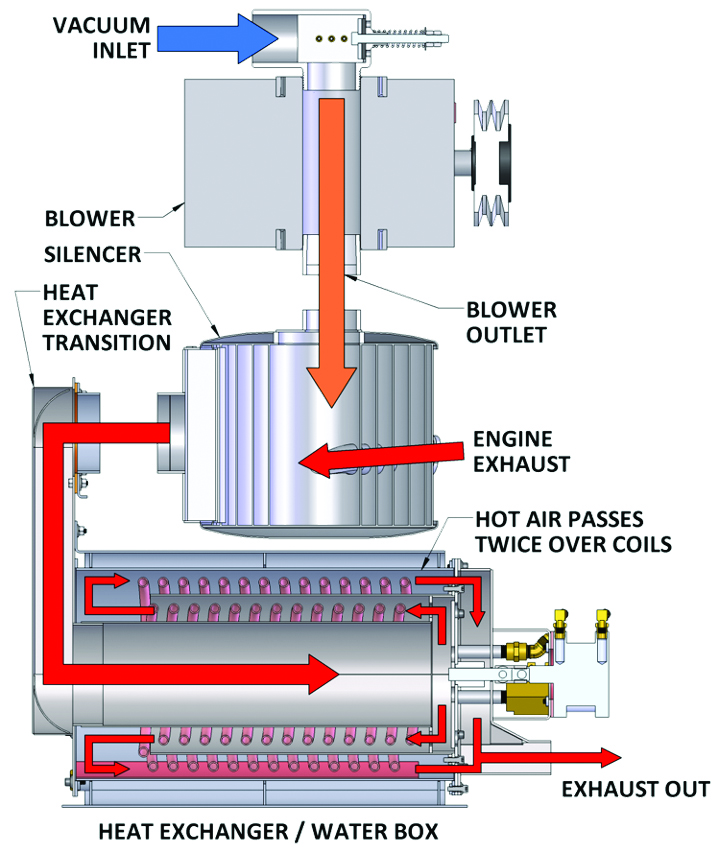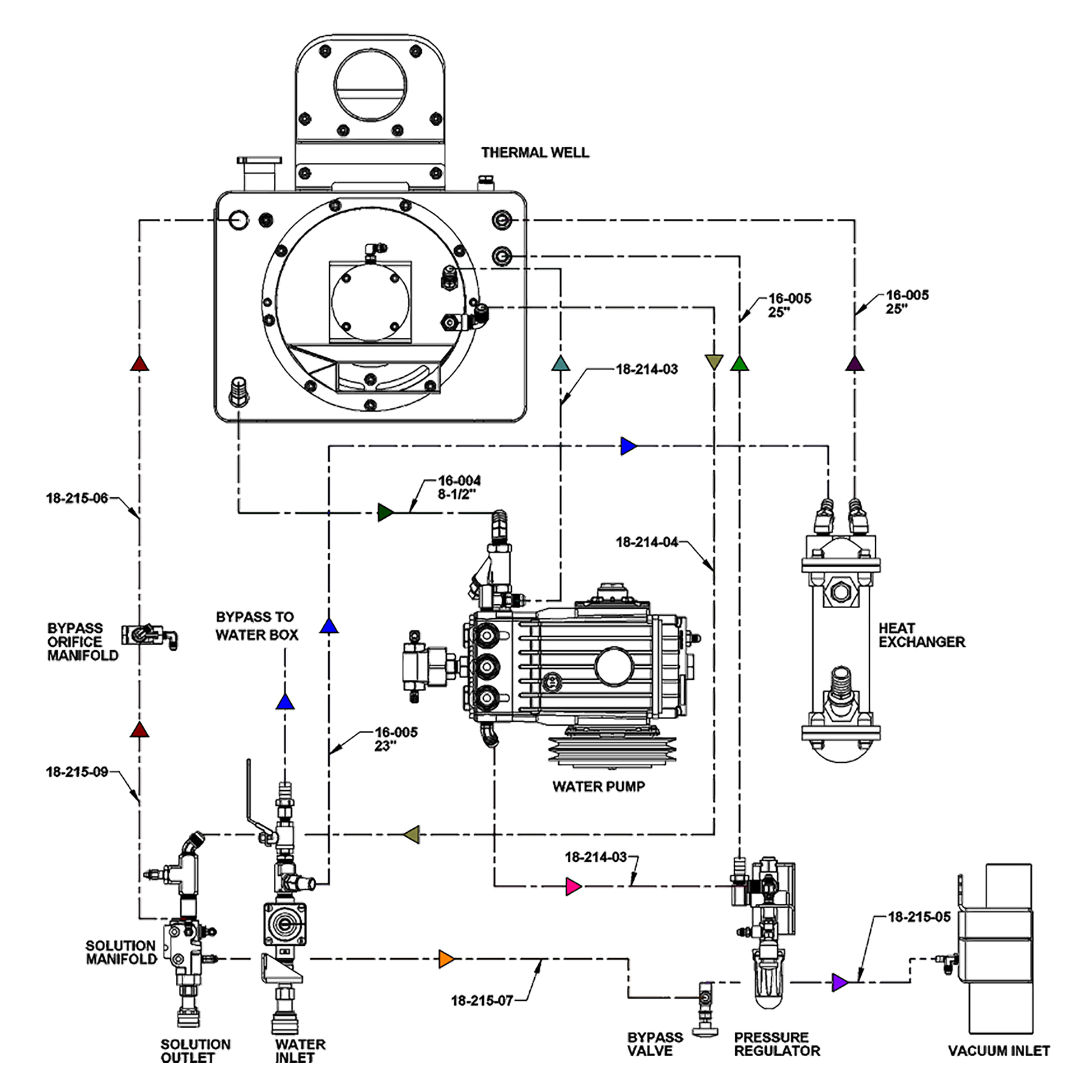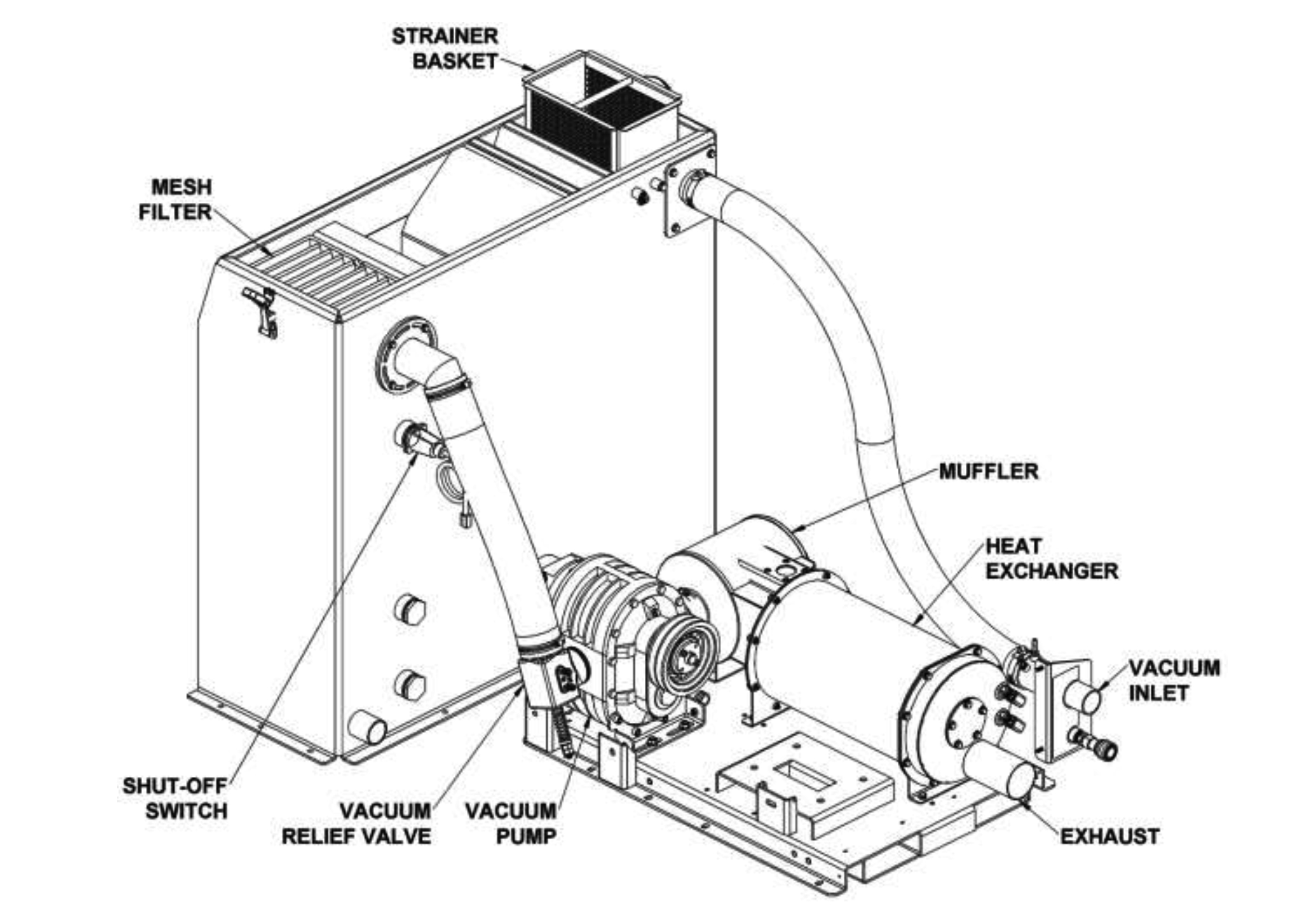Breaking Down the Truckmount

By Dennis Bruders
Truckmount cleaning systems continue to advance in performance, reliability, and versatility beyond just carpet cleaning machines. Some of today’s larger truckmounts are powerful enough to operate three cleaning tools and capable of hot-water, high-pressure washing and waste water recovery.
[one_third]
Regardless of the size and make or model of the truckmount equipment, there are certain components and systems required to manufacture a quality high-performance truckmount cleaning machine.
Michael Roden, vice president of engineering at Legend Brands, has designed truckmounts for over 30 years. According to Roden, “A great truckmount starts with these pillars: Engine, blower, water pump and heat exchange system, and how those components work together.”
Engine
Generally, there are two types of truckmount systems, typically referred to as direct-drive and slide-in systems.
[/one_third]
[two_third_last]
Truckmount Maintenance Cheat Sheet
Daily:
- Lubricate the blower
Monthly:
- Lubricate diverter valves and specialty cylinders
- Clean the bypass manifold orifice and screen
Regularly:
- Check the waste lid gasket for a tight seal (replace if worn)
- Clean or replace dirty filters and float switches
- Clean, inspect, and replace (when necessary) tools, hoses, and waste tank filter
- Clean and inspect wands
- Inspect belts
- Check lubricant levels of the engine, pressure pump, and vacuum pump
- Descale
- Change the engine oil every 200 hours
[/two_third_last]
Direct-drive systems use the vehicle’s engine to generate the power required for the blower and water pump and to heat the water. The most commonly used vehicle for direct-drive truckmounts is the Chevrolet/GMC V-8 van.
The term “slide in” is a bit of a misnomer as the truckmount should always be securely installed by a trained professional to ensure regulatory compliance and driver/operator safety. The cleaning industry’s most popular platform, slide-in truckmounts are powered by industrial engines that are designed to operate under load at constant RPM, with engines ranging from twin-cylinder air-cooled engines to four-cylinder, liquid-cooled, fuel-injected engines. These purpose-built industrial engines are selected by horsepower, torque requirements, fuel efficiency, and expected lifespan.
Vacuum blowers
Engine-driven vacuum blowers range greatly in size and specification. Blowers for truckmounts should always be matched to the specification of the drive engine. For example, if the blower manufacturer states that optimum performance requires the blower to turn at 3,400 RPM with 18 horsepower, then the engine should exceed those specifications. Critical to vacuum performance is a well-designed recovery tank and pre-filtration system.
Pressure pumps
The two ratings most critical to cleaning are the truckmount’s pump pressure rating and gallons per minute (GPM) capabilities at operating RPMs. Most truckmounts are typically designed to clean carpet with a traditional scrub wand at 400-500 psi. Higher quality units produce at least 900 psi and 2.5 GPM, generating enough power to operate hard surface tools. With many cleaners expanding their service offerings beyond carpet cleaning to hard surface cleaning, which requires higher pressures and flow, some units are now capable of pressure washing at 2,500 psi and 5.7 GPM.
Heating systems

Heat Exchange Airflow
-Exhaust from the vacuum blower is deposited into the silencer.
-Hot engine exhaust flows into the silencer and mixes with the blower exhaust.
-This mixture flows through the heat exchanger transition and into the main heat exchanger where it is passed over the water coils and out the exhaust port.
Graphic courtesy of Legend Brands
While a few manufacturers still use secondary fuel heaters like propane boilers to heat cleaning solutions, for the most part, the industry has shifted to heat-exchange systems. These systems capture the previously wasted heat generated by the drive engine and vacuum blower. Heat exchange systems provide free, clean heat, thus reducing operating costs and the system’s carbon footprint.
Modern heat exchange systems are so highly efficient that several truckmount models are capable of maintaining super-heated water temps for multiple tools at the same time. Critical to any heat-exchange truckmount is the solution temperature control system. Modern electronic thermostatic controls allow for safe and accurate regulation of water temperatures.
All truckmount systems working together
While it may seem fairly simple to buy some parts and bolt them together, it takes much more to achieve the best system possible. Roden says the key is creating an extremely balanced system so that each component compliments the others. The bottom line is a balanced truckmount system, engineered to match components, provides optimized performance and durability.

System Flow Chart
A high-level view of how a truckmount’s components function together.
Graphic courtesy of Legend Brands
Dennis Bruders’ extensive knowledge of truckmounts comes from his 28 years of experience in carpet and rug cleaning and restoration and cleaning equipment distribution, then working closely during the last seven years with the equipment and product development team at Legend Brands.













